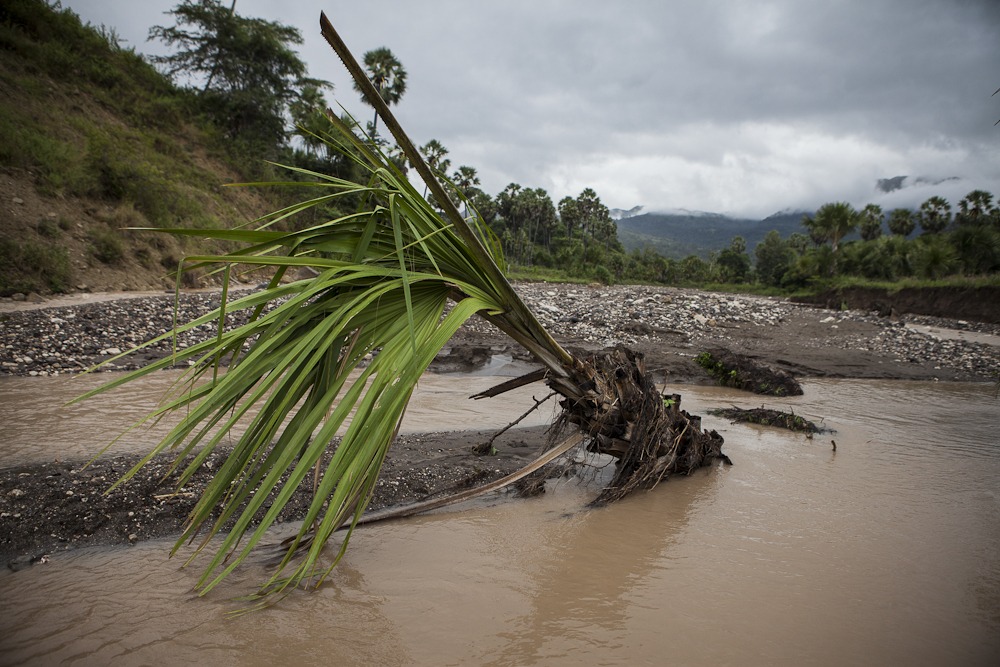

Landcare Approach to Community NRM in Timor Leste
November 29, 2021

Some years back, the Crawford Fund organised a journalist visit to Timor Leste, with the then team leader of the ACIAR Seeds of Life (SoL) project, John Dalton interviewed by ABC journalist Sarina Locke.
We now have the benefit of John as a mentor within a project to initiate a Landcare approach to community Natural Resource Management (NRM) in collaboration with Timorese colleagues from the SoL project that John led for 5 years (2011-2016). John’s years in, and evident passion for, the country and the people, and his tremendous network on the ground are bearing fruit. He has provided an interim report on the work underway, indicating progress made possible through excellent communication and trust built over many years.
Just as plans were underway for John to travel to Timor Leste in 2020, COVID-19 prompted a move to remote mentoring of ex-SoL colleagues. The severe flash flooding and destruction wrought by a very intense storm that struck Timor Leste last Easter further demonstrated the urgency of integrating community NRM and a catchment approach.
The job at hand was to assess the community NRM situation in sample catchments to jointly prepare a discussion paper on the vulnerability of smallholder farmers and their rural communities to even lower farm production, food security, nutrition and livelihoods. The challenges faced include uncontrolled rainfall runoff, soil erosion, sedimentation, increased rainfall variability and frequency of drought and flash flooding that are inevitable with increasing climate change.
Approval was sought and given for two staff at the Ministry of Agriculture and Fisheries Research Division to work with John. Anita Ximenes Manirasa and Octaviana Ferreira Agostinho were provided with relevant information and training materials and online discussions were held on some of the key principles, approaches, strategies and techniques to apply when conducting community NRM assessment in general and in particular the social, cultural and environmental situations that are most common when assessing community NRM and catchment management in Timor Leste.
With John’s guidance from afar, the initial assessment of the catchment in Metinaro subdistrict of Dili Municipality was conducted in early October 2020 in collaboration with local officials and farming families.
During the field work in the 3,000 ha Aiseahe catchment in subdistrict Metinaro, the participants sent photos and when telecommunications enabled, linked live to discuss and analyse the actual situations evident.
The two Dili-based researchers expressed surprise on witnessing first-hand the very challenging natural conditions and poor services the farming families had to contend with despite being only 15 km west of the capital city of Dili.
Next, an additional catchment was identified in a small coastal village in Laclo, subdistrict of the adjoining Municipality of Manatuto.
The team have linked with John’s long- time colleague and resident Filipino forestry professor and GIS expert Petronilo Munez Jnr, to obtain imagery and thematic maps of this small catchment which has been selected to provide a strong comparison with the Aiseahe catchment in subdistrict Metinaro which has very different characteristics.
They have also linked with the local Timorese NGO ‘RAEBIA’, which John worked with during his SoL days. It had a 2ha demonstration and training centre of soil and water conservation and production improvement on bare steep hillsides in a lower portion of the catchment.
John recalls when he lived in Dili he would take officials to directly witness the remarkable productivity improvements that were clearly evident when a range of simple rainfall runoff and soil erosion control methods were applied by small farmers and their rural communities to steep and denuded hillsides.

John reports that Dr Xisto Martins, Director of RAEBIA, has recently returned from 3 years in the Philippines where he has been completing a PhD in NRM at the University of the Philippines at Los Banos. He and John had previously worked closely together on common projects including establishing the Timor Leste National Seed System and implementing the Raumoco Pilot Project in community NRM and catchment management.
Now, Xisto is keen to collaborate in achieving the purpose of this Landcare mentoring activity, beginning with the NRM Team’s Situation Assessment in the small catchment at Uma Kaduak.
John is currently updating Xisto and RAEBIA on community NRM and catchment management materials previously provided to the NRM Team, the Team’s previous activities in Aiseahe catchment in Metinaro, and progress to date.
John presented to ANU students on catchment management in Timor Leste, with the photo above of washed out trees graphically showing just what the farmers are up against!
We look forward to hearing more as the progress continues.




